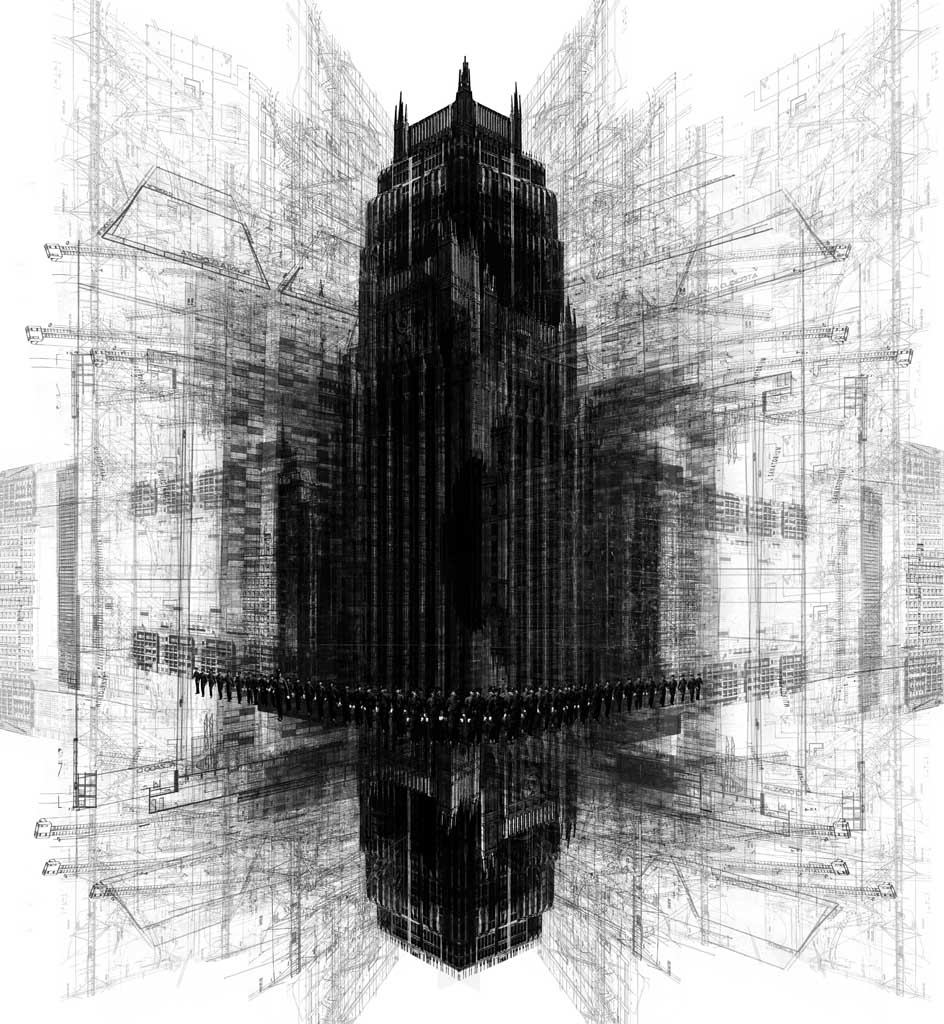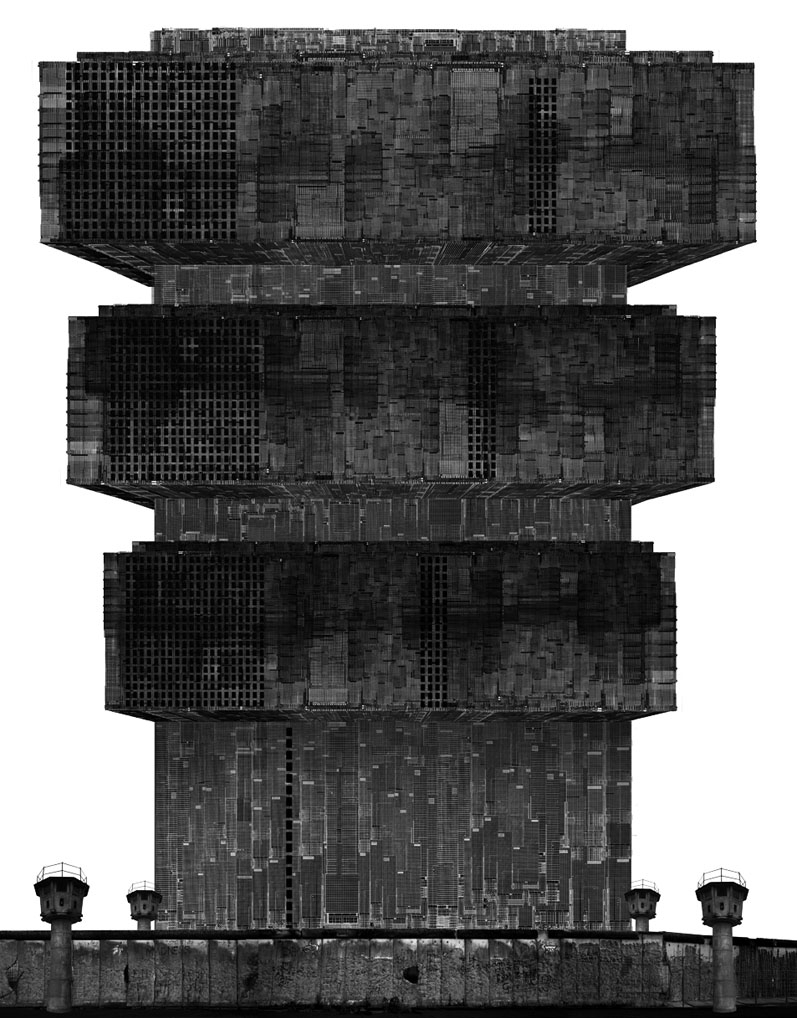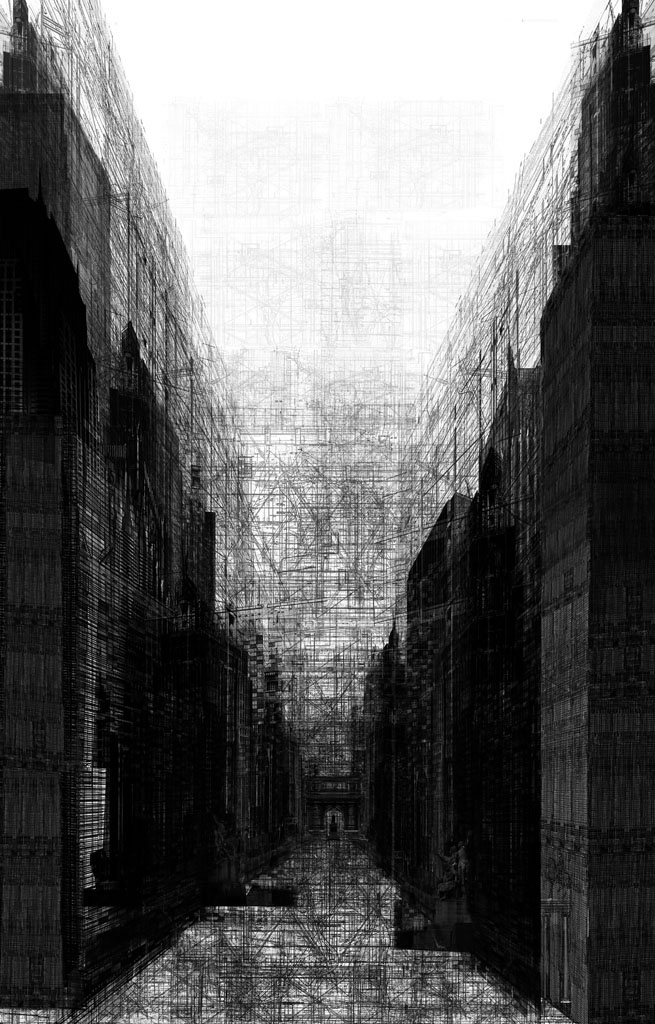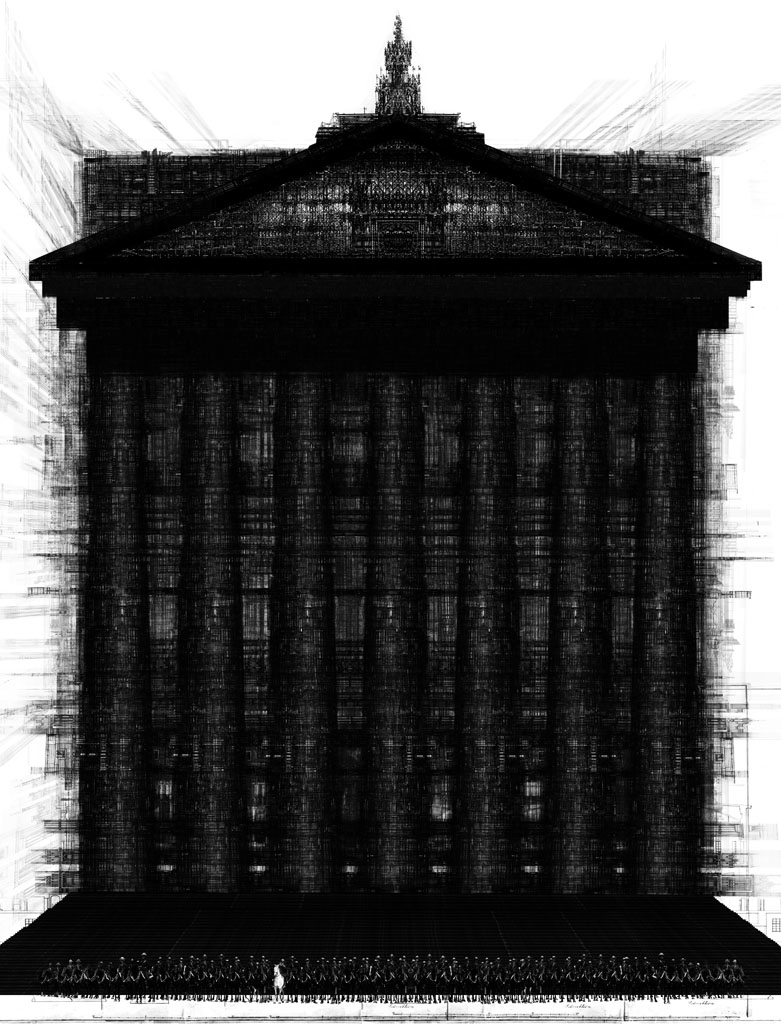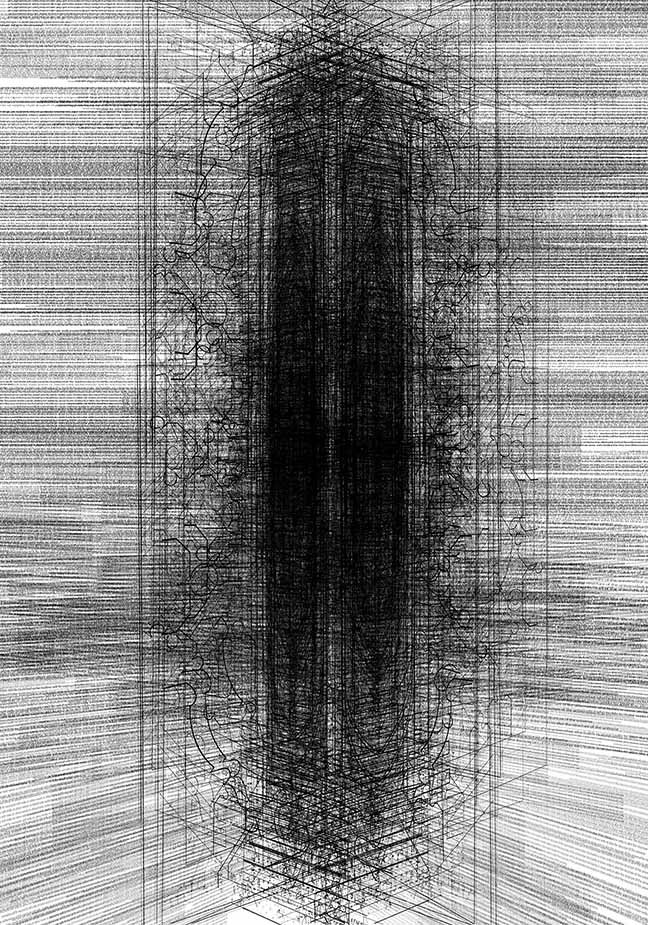Conner Green
May 13, 2019
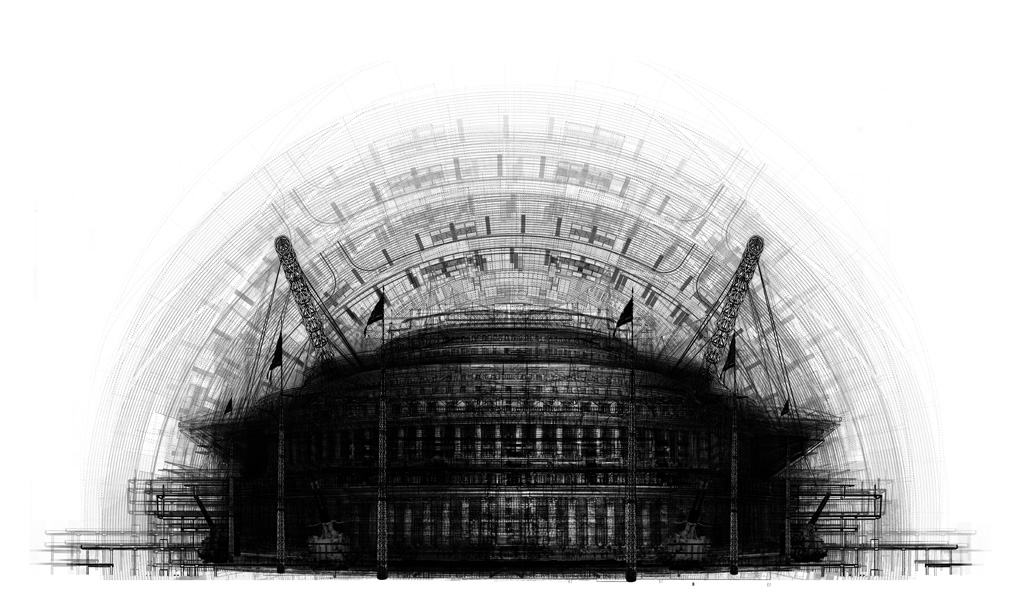
Conner Green | Imperia
How do you map and understand the essence of a space? Conner Green concocts a tangle of lines that writhe and snake their way through empty whiteness until they become blueprints of archetypal, but non-existent buildings. The frenzy of lines are dense and draw our attention to them in a hopeful pursuit of clues, as if secrets may be discovered by searching through the mess. Lines with an audible radio wave-like quality invade the white expanse that surrounds the edifices. The drawings are in motion, and these ghosting vibrations creep like spider webs and eventually spill their structural elements outside of their own forms. In Municipium, the world has lost its ground as the webs of structure grow in every direction. This is an architect’s nightmare — the blueprint taking on a life of its own. Buildings transform into machines that write themselves. Their trajectory, like the course of a robot in a science fiction novel, grows with an inevitable life of its own. They become a living fortress, a dark living thing.
These images relate to Richard Ross’ project, Architecture of Authority, in which Ross explores the empty rooms that house power. By showing the context and the spaces without the inhabitants, Ross highlights elements of power subconsciously built into our environments.
Green’s images could be the imaginative exteriors to Ross’s interiors. In these imaginations, Green has stripped the institutions of their human presence, exposing the language of control. Figures, when they appear, as in Municipium, seem not to belong to themselves or be any kind of individual being, but rather, they are a force in service of the structure. Any elements not related to the buildings are implements of conflict- guns, soldiers and guard towers. In Imperium, the massive structure nearly fills the entire frame, like a wall of force with a line of guardsmen facing off in front of it.
Green’s monumental monoliths, buildings isolated in a void, inhabit a space apart from any community. The iconic architectural forms that he references suggest history and age, and yet, we imagine these buildings to be part of some sort of futuristic society. We are looking both forward or back in time, and in this way, past, present, and future are collapsed into one frame. In one image Green is reflecting a bleak interpretation of our past and current society while at the same time revealing a possible future.
In this stark city situated in unending white day, we search through folded time for a place that we instinctively feel we must already know. We become transfixed and entangled in a perspective that is simultaneously moving and dormant. This way of looking is perplexing, and somehow we leave the image feeling that perhaps we missed the very thing that we were supposed to see.
- Mia Dalglish + Lisa Woodward
You can see more of Conner Green’s work here.
